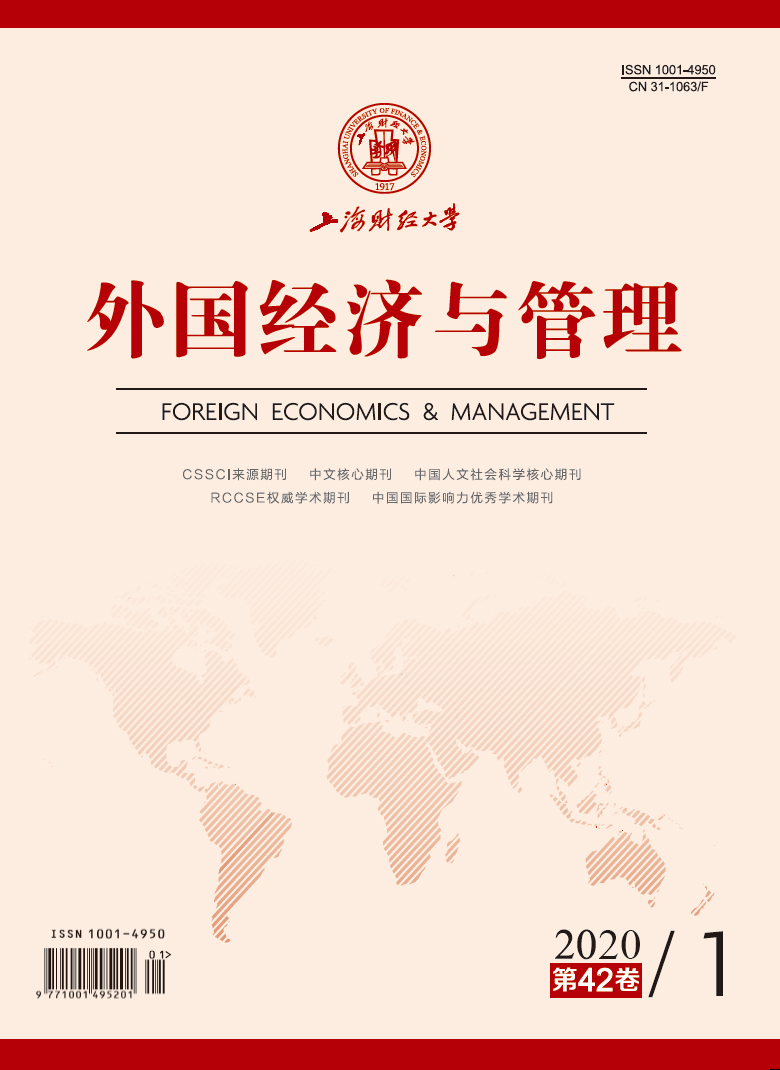消费者渴望拥有酷的产品,企业也非常重视“酷”的市场价值。正因如此,营销领域日益关注“酷感知”这一话题,并取得了丰硕的研究成果。然而,目前鲜有学者对酷感知相关文献和研究成果进行系统的梳理和述评,这在一定程度上制约了酷感知的研究与营销实践。本文对“酷”的起源和发展、酷感知的概念内涵和测量、酷感知的前因以及后效进行了系统的梳理与述评,并提出了该领域未来研究的四个重要方向。
“哇!这真酷”:消费者酷感知研究综述及展望
摘要
参考文献
2 杜伟宇, 许伟清. 中国情境下权力对炫耀性产品购买意愿的影响: 面子意识的中介效应[J]. 南开管理评论,2014, (5): 83-90. DOI:10.3969/j.issn.1008-3448.2014.05.010
3 王海忠, 王骏旸, 罗捷彬. 要素品牌策略与产品独特性评价: 自我建构和产品性质的调节作用[J]. 南开管理评论,2012, (4): 111-117. DOI:10.3969/j.issn.1008-3448.2012.04.012
4 吴金南, 李见, 张宇青. 青年消费者感知炫酷的理论结构及其影响研究[J]. 中国青年研究,2016, (7): 85-91. DOI:10.3969/j.issn.1002-9931.2016.07.013
5 Bandura A. Social cognitive theory: An agentic perspective[J]. Annual Review of Psychology,2001, 52(1): 1-26. DOI:10.1146/annurev.psych.52.1.1
6 Bearden W O, Etzel M J. Reference group influence on product and brand purchase decisions[J]. Journal of Consumer Research,1982, 9(2): 183-194. DOI:10.1086/208911
8 Bird S, Tapp A. Social marketing and the meaning of cool[J]. Social Marketing Quarterly,2008, 14(1): 18-29. DOI:10.1080/15245000801898399
9 Bookman S. Branded cosmopolitanisms: “Global” coffee brands and the co-creation of “cosmopolitan cool”[J]. Cultural Sociology,2013, 7(1): 56-72. DOI:10.1177/1749975512453544
13 Dar-Nimrod I, Hansen I G, Proulx T, et al. Coolness: An empirical investigation[J]. Journal of Individual Differences,2012, 33(3): 175-185. DOI:10.1027/1614-0001/a000088
14 Erber R, Wegner D M, Therriault N. On being cool and collected: Mood regulation in anticipation of social interaction[J]. Journal of Personality and Social Psychology,1996, 70(4): 757-766. DOI:10.1037/0022-3514.70.4.757
15 Ferguson S. A global culture of cool? Generation Y and their perception of coolness[J]. Young Consumers,2011, 12(3): 265-275. DOI:10.1108/17473611111163313
16 Fredrickson B L. The role of positive emotions in positive psychology: The broaden-and-build theory of positive emotions[J]. American Psychologist,2001, 56(3): 218-226. DOI:10.1037/0003-066X.56.3.218
18 Higgins E T. Self-discrepancy: A theory relating self and affect[J]. Psychological Review,1987, 94(3): 319-340. DOI:10.1037/0033-295X.94.3.319
19 Holt D B, Thompson C J. Man-of-action heroes: The pursuit of heroic masculinity in everyday consumption[J]. Journal of Consumer Research,2004, 31(2): 425-440. DOI:10.1086/422120
20 Holtzblatt K. What makes things cool? Intentional design for innovation[J]. Interactions,2011, 18(6): 40-47. DOI:10.1145/2029976.2029988
21 Im S, Bhat S, Lee Y. Consumer perceptions of product creativity, coolness, value and attitude[J]. Journal of Business Research,2015, 68(1): 166-172. DOI:10.1016/j.jbusres.2014.03.014
24 Kim K J, Shin D H, Park E. Can coolness predict technology adoption? Effects of perceived coolness on user acceptance of smartphones with curved screens[J]. Cyberpsychology, Behavior, and Social Networking,2015, 18(9): 528-533. DOI:10.1089/cyber.2014.0675
25 Kim S, Rucker D D. Bracing for the psychological storm: Proactive versus reactive compensatory consumption[J]. Journal of Consumer Research,2012, 39(4): 815-830. DOI:10.1086/665832
26 Kirkland D E, Jackson A. “We real cool”: Toward a theory of black masculine literacies[J]. Reading Research Quarterly,2009, 44(3): 278-297. DOI:10.1598/RRQ.44.3.3
28 Markus H R, Kitayama S. Culture and the self: Implications for cognition, emotion, and motivation[J]. Psychological Review,1991, 98(2): 224-253. DOI:10.1037/0033-295X.98.2.224
29 Markus H R, Schwartz B. Does choice mean freedom and well-being?[J]. Journal of Consumer Research,2010, 37(2): 344-355. DOI:10.1086/651242
30 Mohiuddin K G B, Gordon R, Magee C, et al. A conceptual framework of cool for social marketing[J]. Journal of Social Marketing,2016, 6(2): 121-143. DOI:10.1108/JSOCM-07-2015-0046
31 Moldovan S, Goldenberg J, Chattopadhyay A. The different roles of product originality and usefulness in generating word-of-mouth[J]. International Journal of Research in Marketing,2011, 28(2): 109-119. DOI:10.1016/j.ijresmar.2010.11.003
32 Nancarrow C, Nancarrow P, Page J. An analysis of the concept of cool and its marketing implications[J]. Journal of Consumer Behaviour,2002, 1(4): 311-322. DOI:10.1002/cb.77
35 Pountain D, Robins D. Cool rules: Anatomy of an attitude[M]. London: Reaktion, 2000: 1-195.
39 Runyan R C, Noh M, Mosier J. What is cool? Operationalizing the construct in an apparel context[J]. Journal of Fashion Marketing and Management,2013, 17(3): 322-340. DOI:10.1108/JFMM-01-2012-0001
40 Simonson I, Nowlis S M. The role of explanations and need for uniqueness in consumer decision making: Unconventional choices based on reasons[J]. Journal of Consumer Research,2000, 27(1): 49-68. DOI:10.1086/314308
41 Solomon M R. The role of products as social stimuli: A symbolic interactionism perspective[J]. Journal of Consumer Research,1983, 10(3): 319-329. DOI:10.1086/208971
43 Sriramachandra R, Hodis M. Why is Apple cool? An examination of brand coolness and its marketing consequences[A]. Enhancing knowledge development in marketing[C]. American Marketing Association, 2010: 147-149.
44 Stok F M, De Ridder D T D, Adriaanse M A, et al. Looking cool or attaining self-rule: Different motives for autonomy and their effects on unhealthy snack purchase[J]. Appetite,2010, 54(3): 607-610. DOI:10.1016/j.appet.2010.02.017
45 Strutton D, Taylor D G, Thompson K. Investigating generational differences in e-WOM behaviours: For advertising purposes, does X = Y?[J]. International Journal of Advertising,2011, 30(4): 559-586. DOI:10.2501/IJA-30-4-559-586
46 Sundar S S, Tamul D J, Wu M. Capturing “cool”: Measures for assessing coolness of technological products[J]. International Journal of Human-Computer Studies,2014, 72(2): 169-180. DOI:10.1016/j.ijhcs.2013.09.008
47 Tian K T, Bearden W O, Hunter G L. Consumers’ need for uniqueness: Scale development and validation[J]. Journal of Consumer Research,2001, 28(1): 50-66. DOI:10.1086/321947
48 Wang R, Sundar S S. How does parallax scrolling influence user experience? A test of TIME(theory of interactive media effects)[J]. International Journal of Human-Computer Interaction,2018, 34(6): 533-543. DOI:10.1080/10447318.2017.1373457
49 Warren C, Campbell M C. What makes things cool? How autonomy influences perceived coolness[J]. Journal of Consumer Research,2014, 41(2): 543-563. DOI:10.1086/676680
50 Warren C, Pezzuti T, Koley S. Is being emotionally inexpressive cool?[J]. Journal of Consumer Psychology,2018, 28(4): 560-577. DOI:10.1002/jcpy.1039
引用本文
李见, 龚艳萍, 谢菊兰, 等. “哇!这真酷”:消费者酷感知研究综述及展望[J]. 外国经济与管理, 2020, 42(1): 42-54.
导出参考文献,格式为:






 10971
10971  7054
7054

